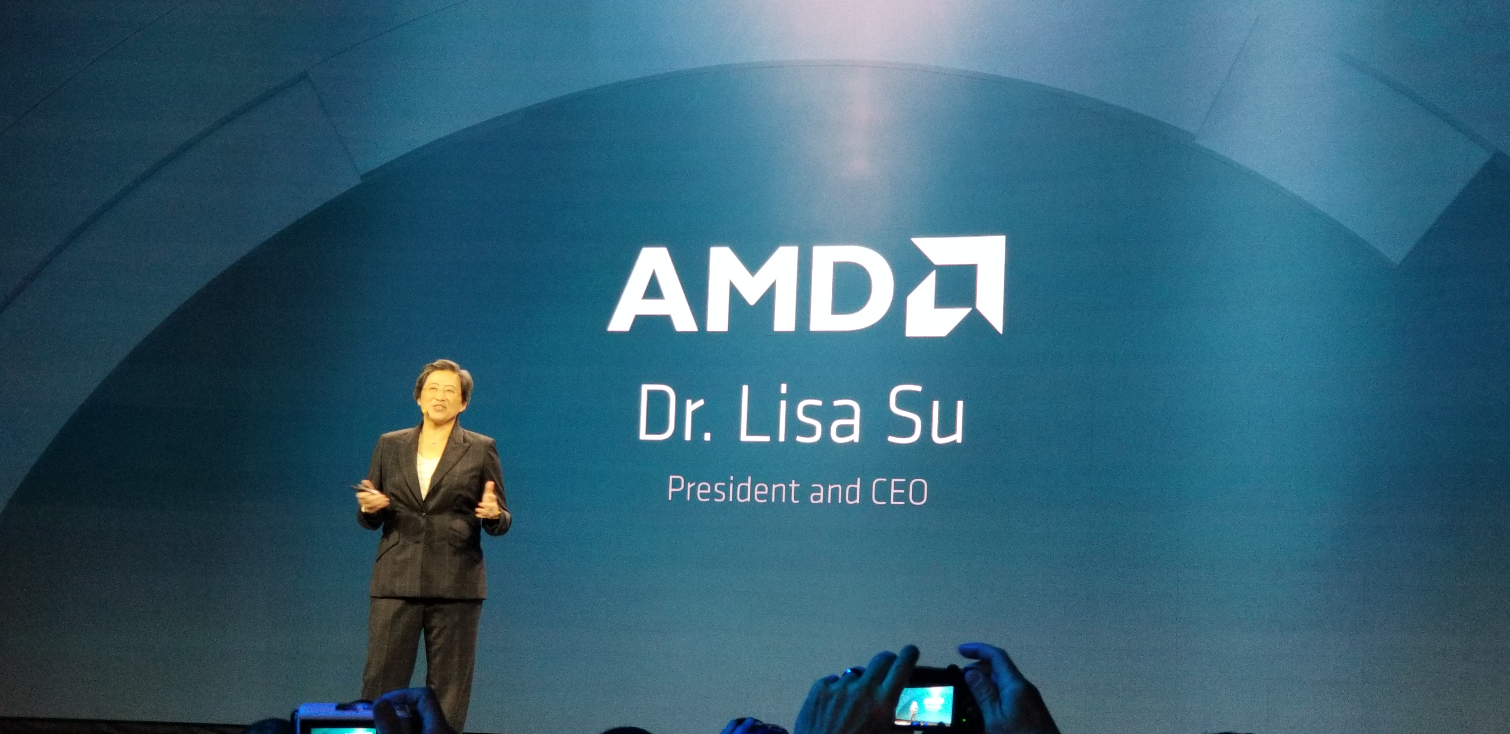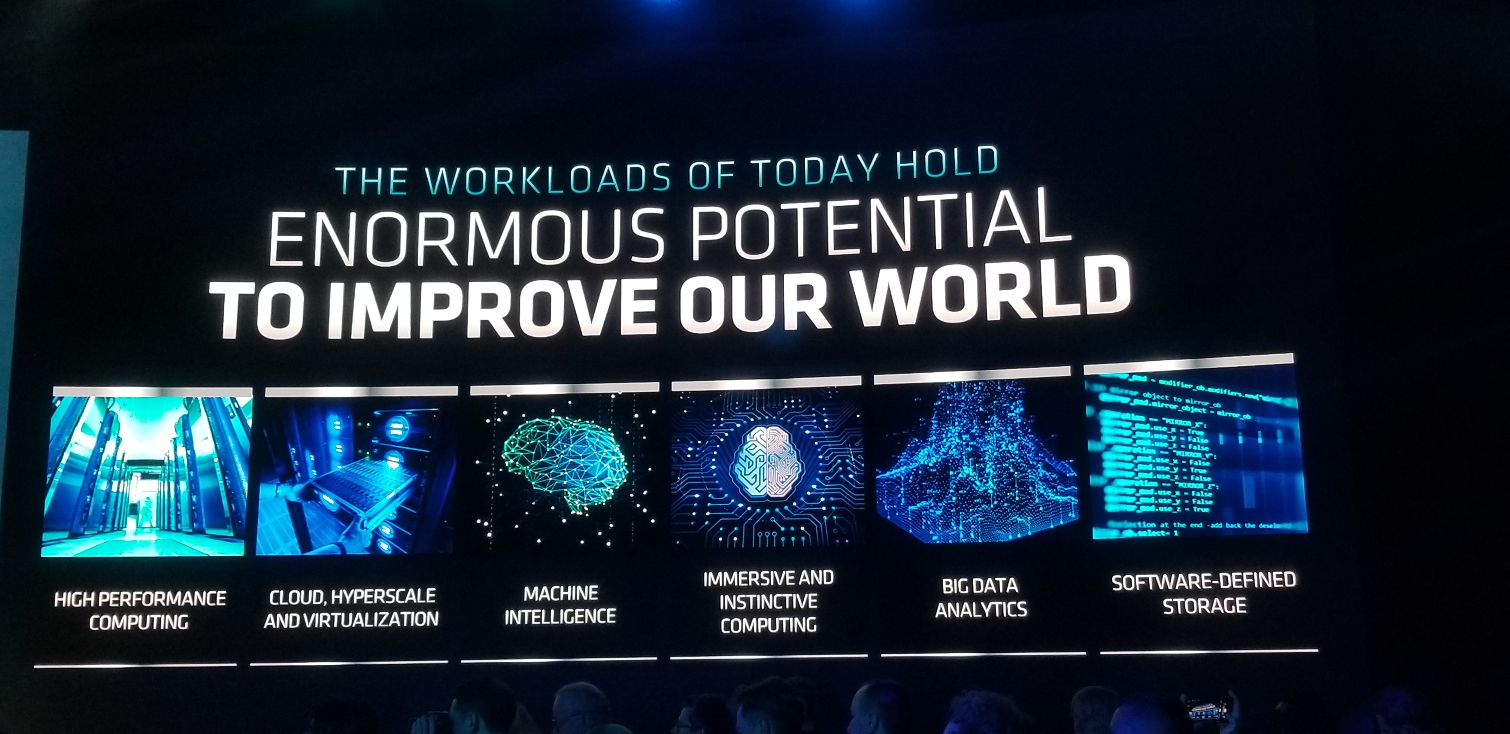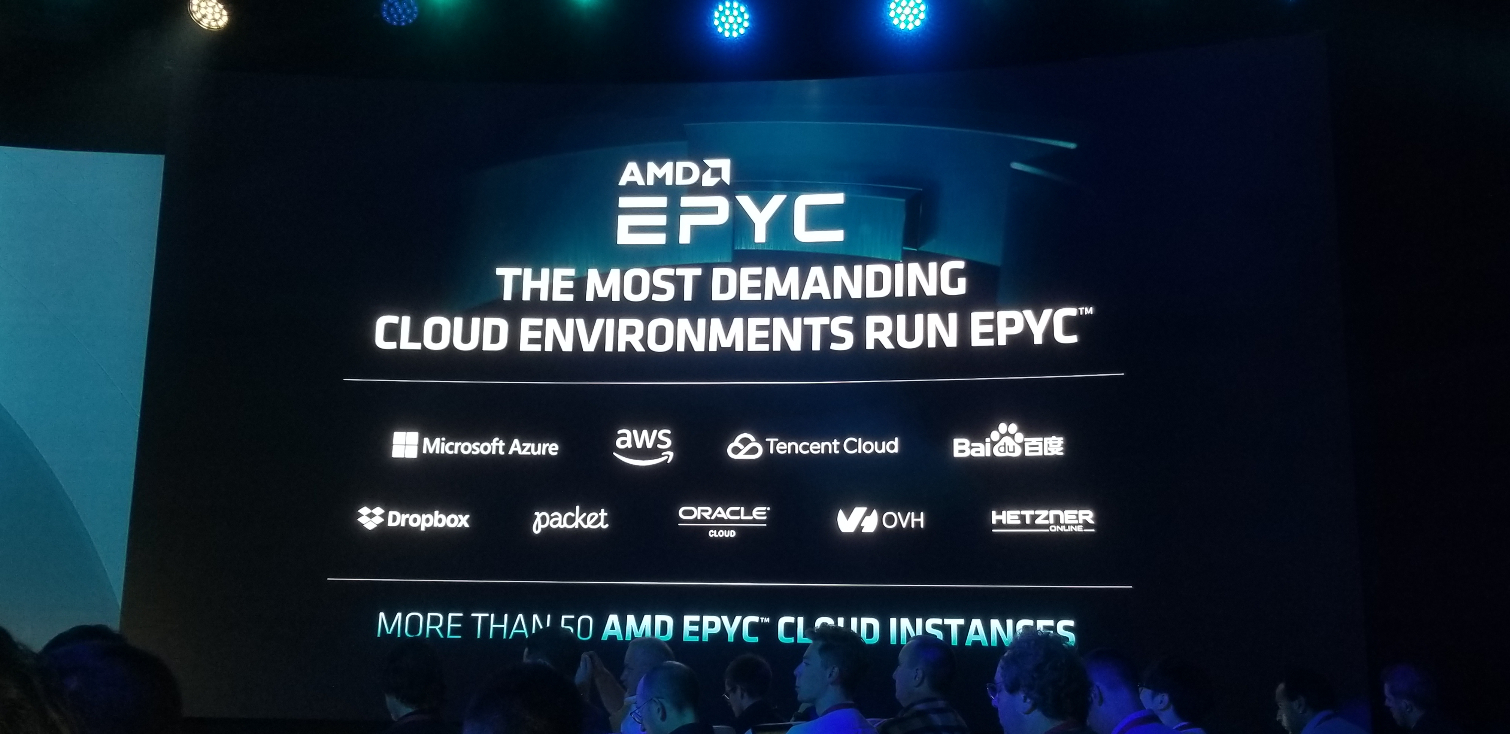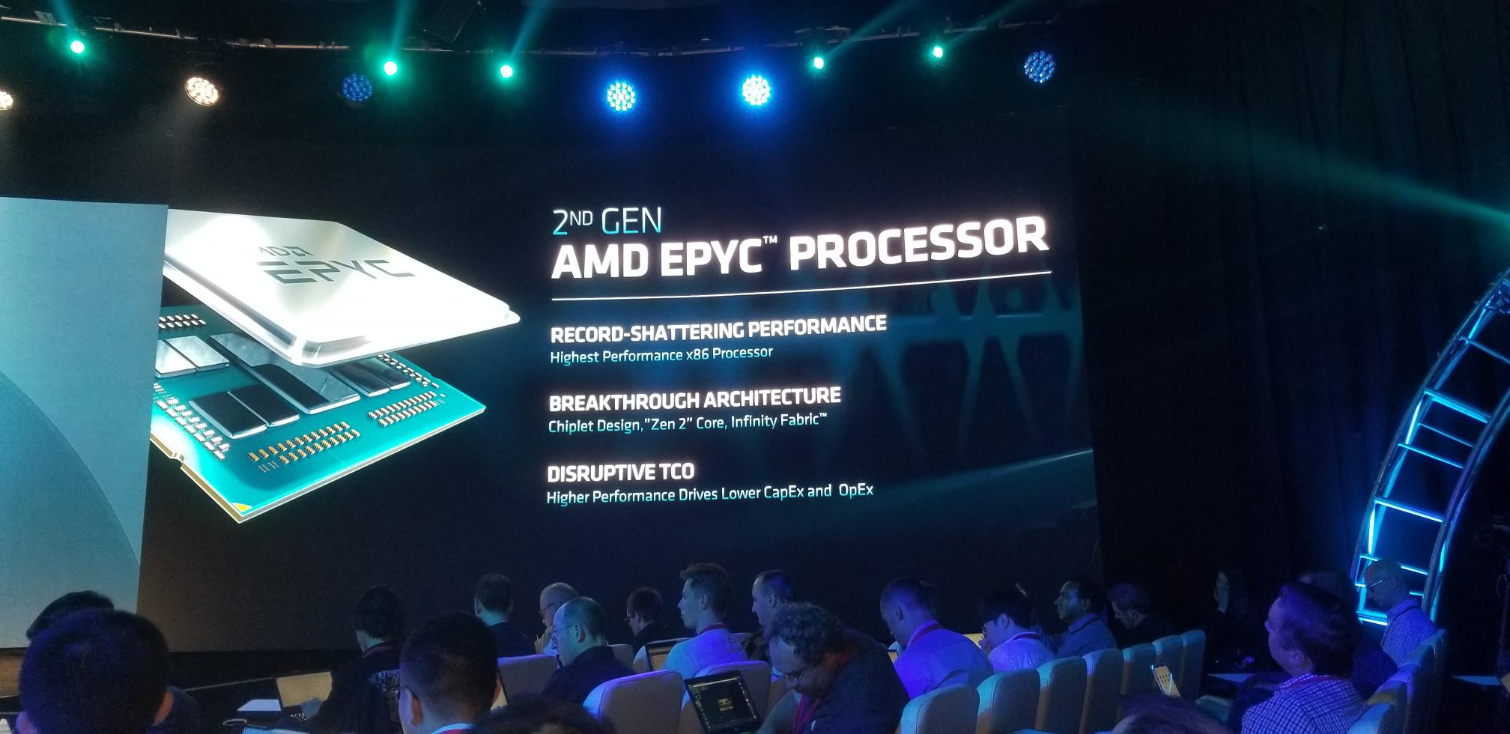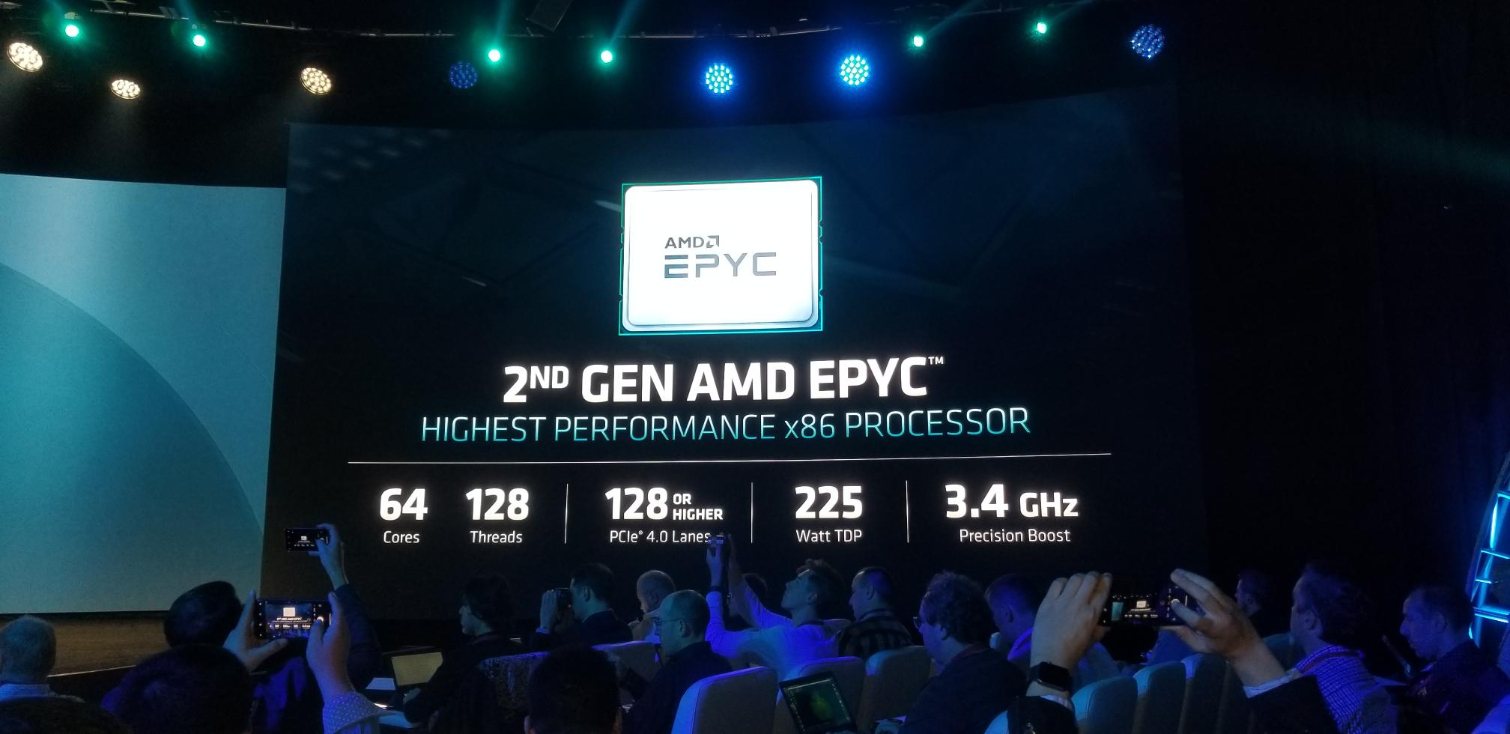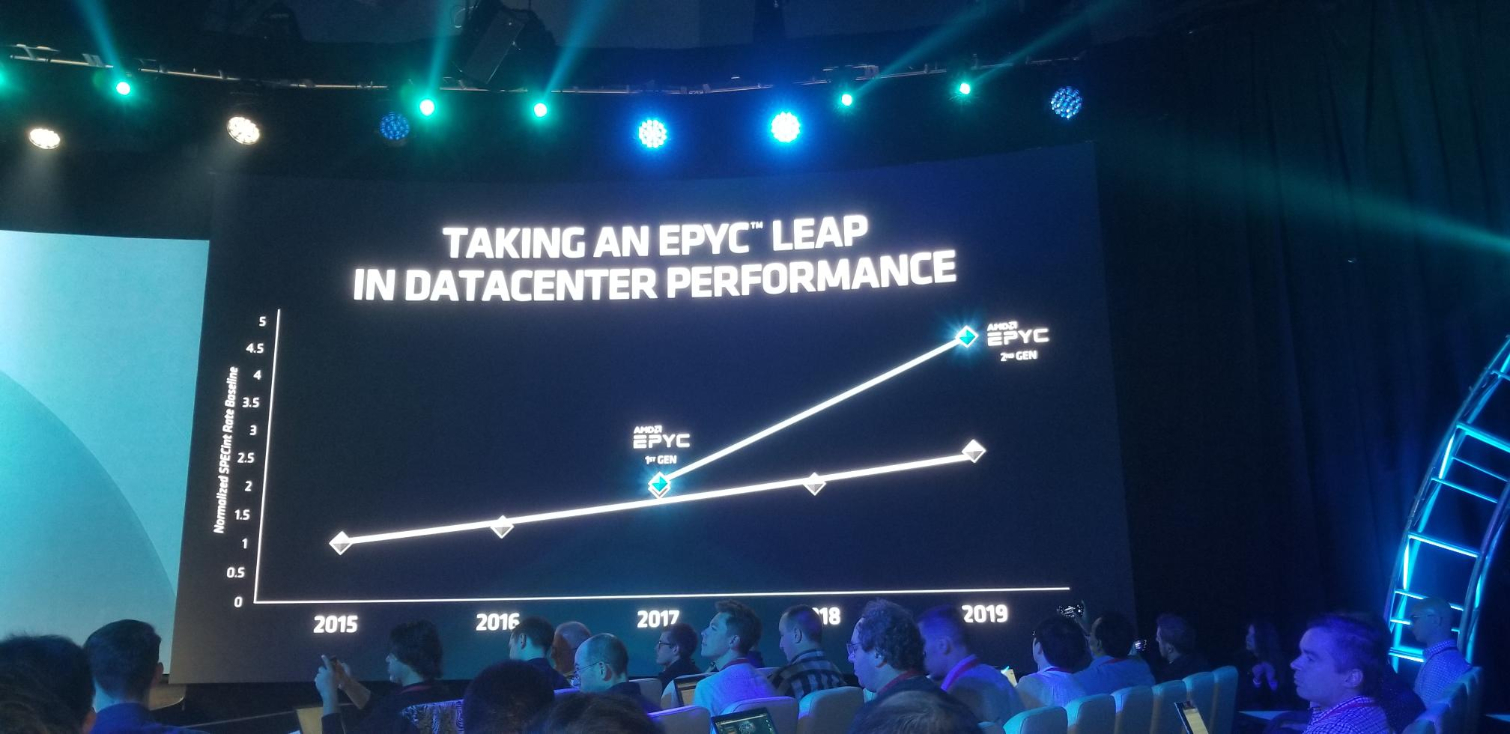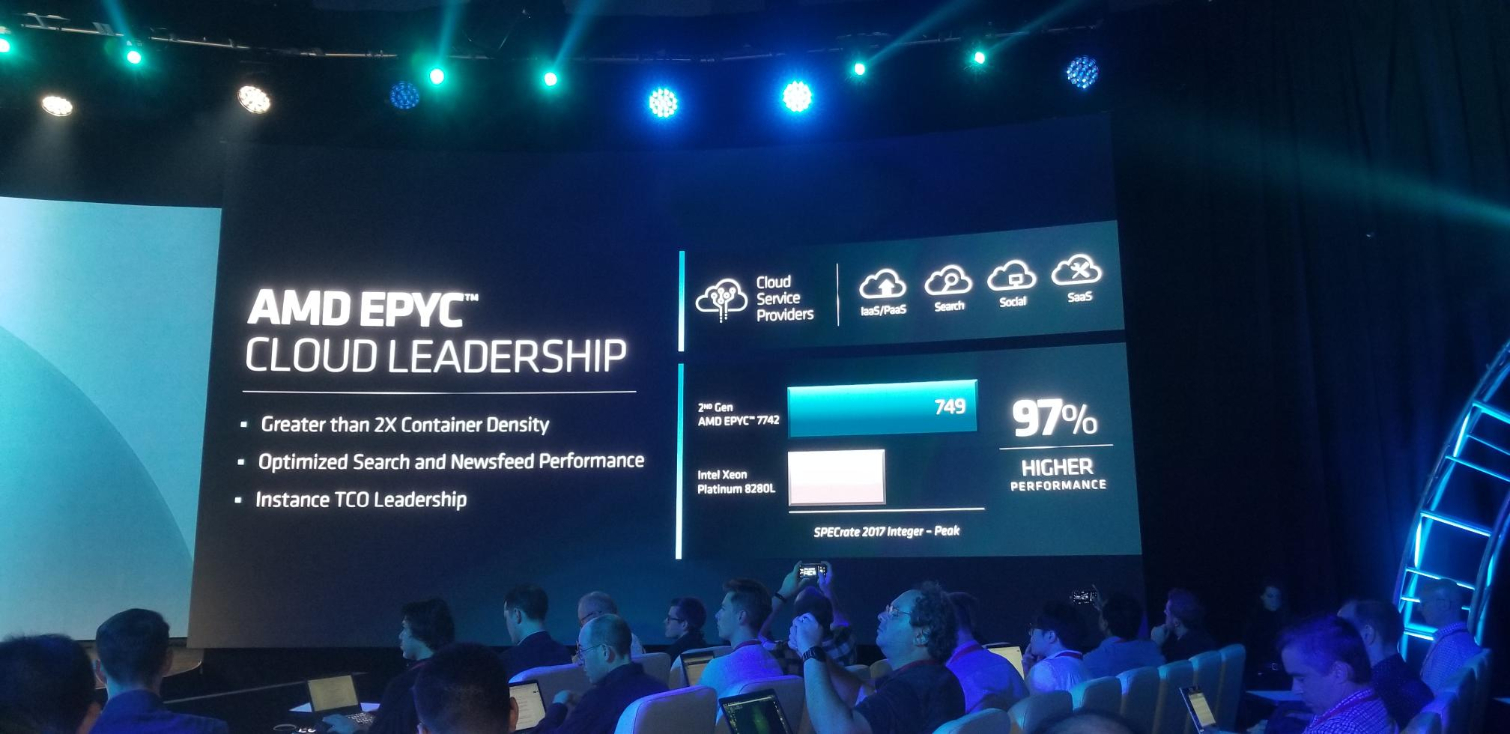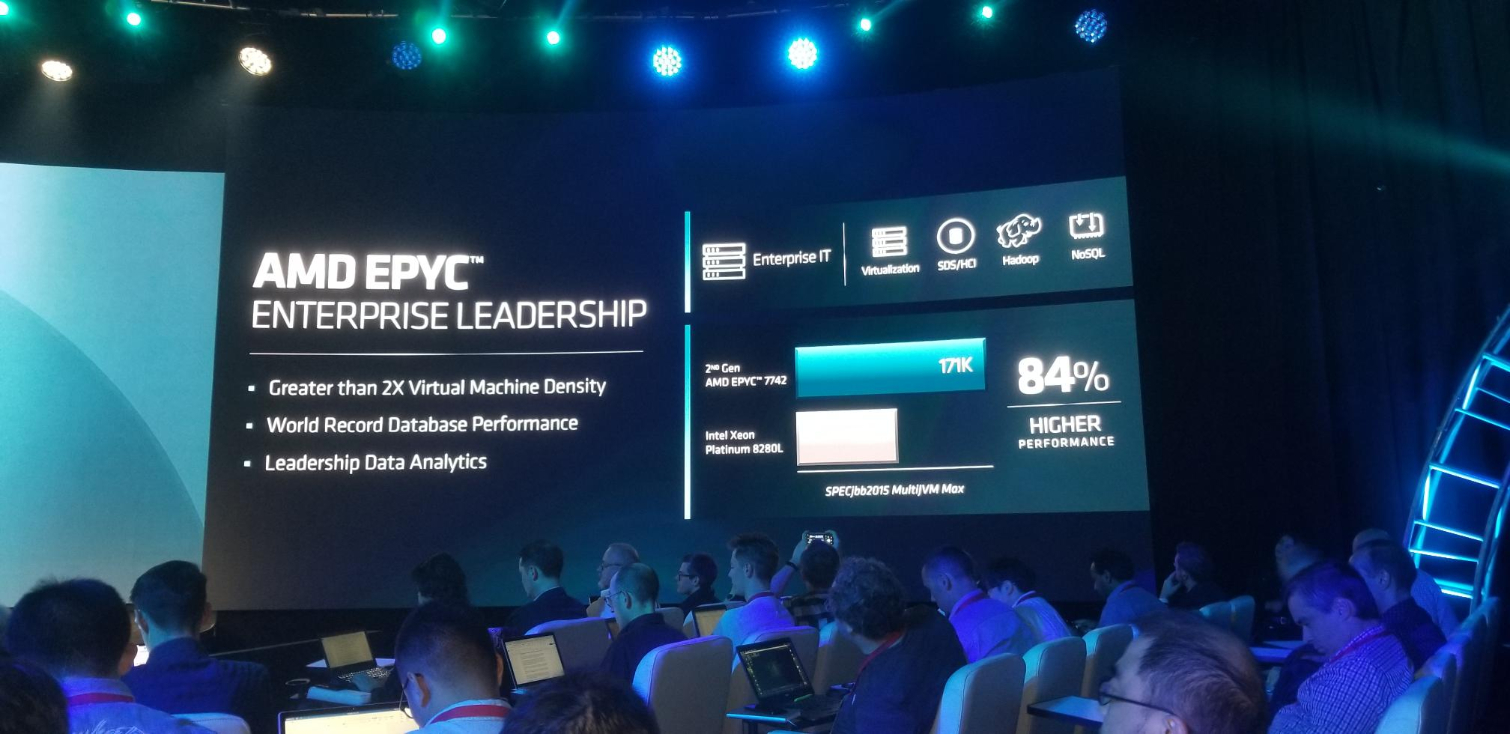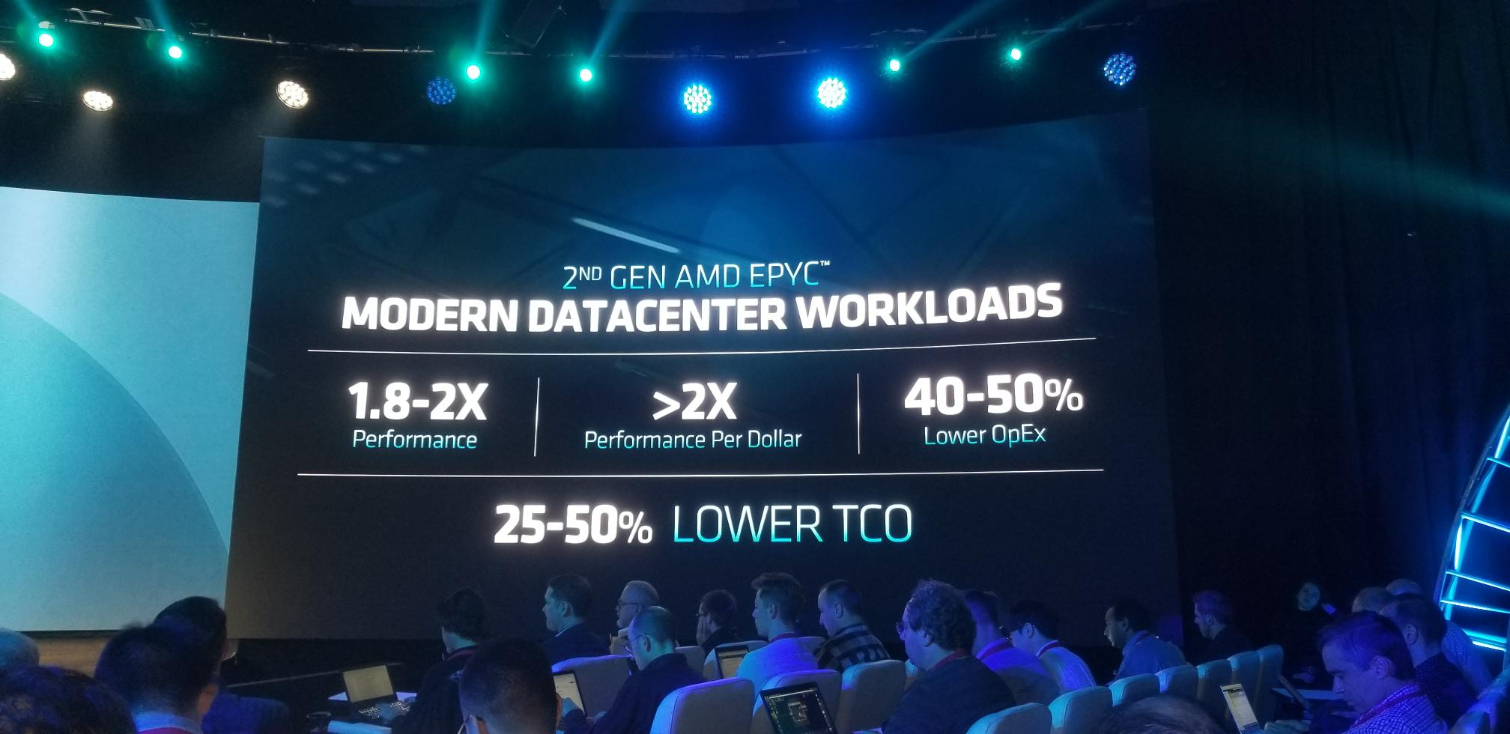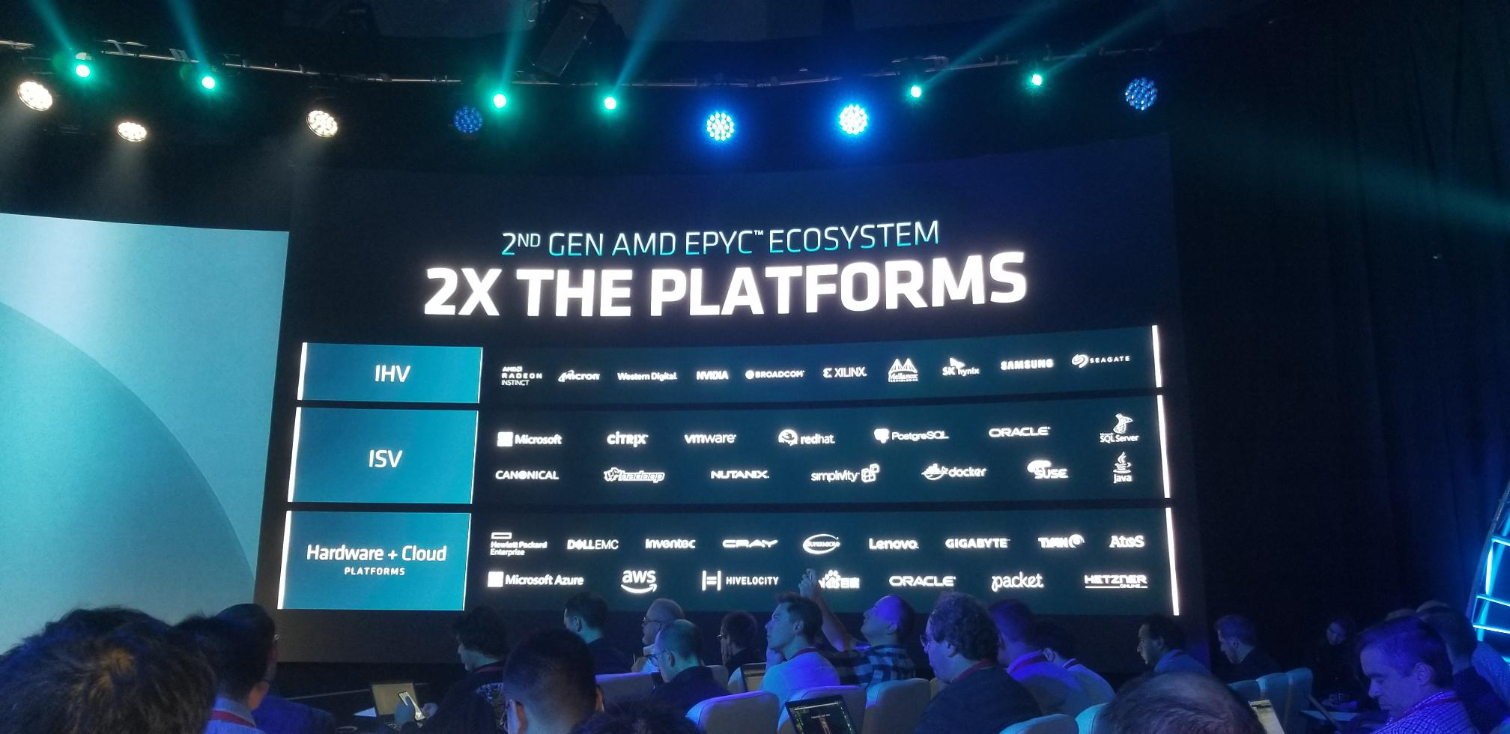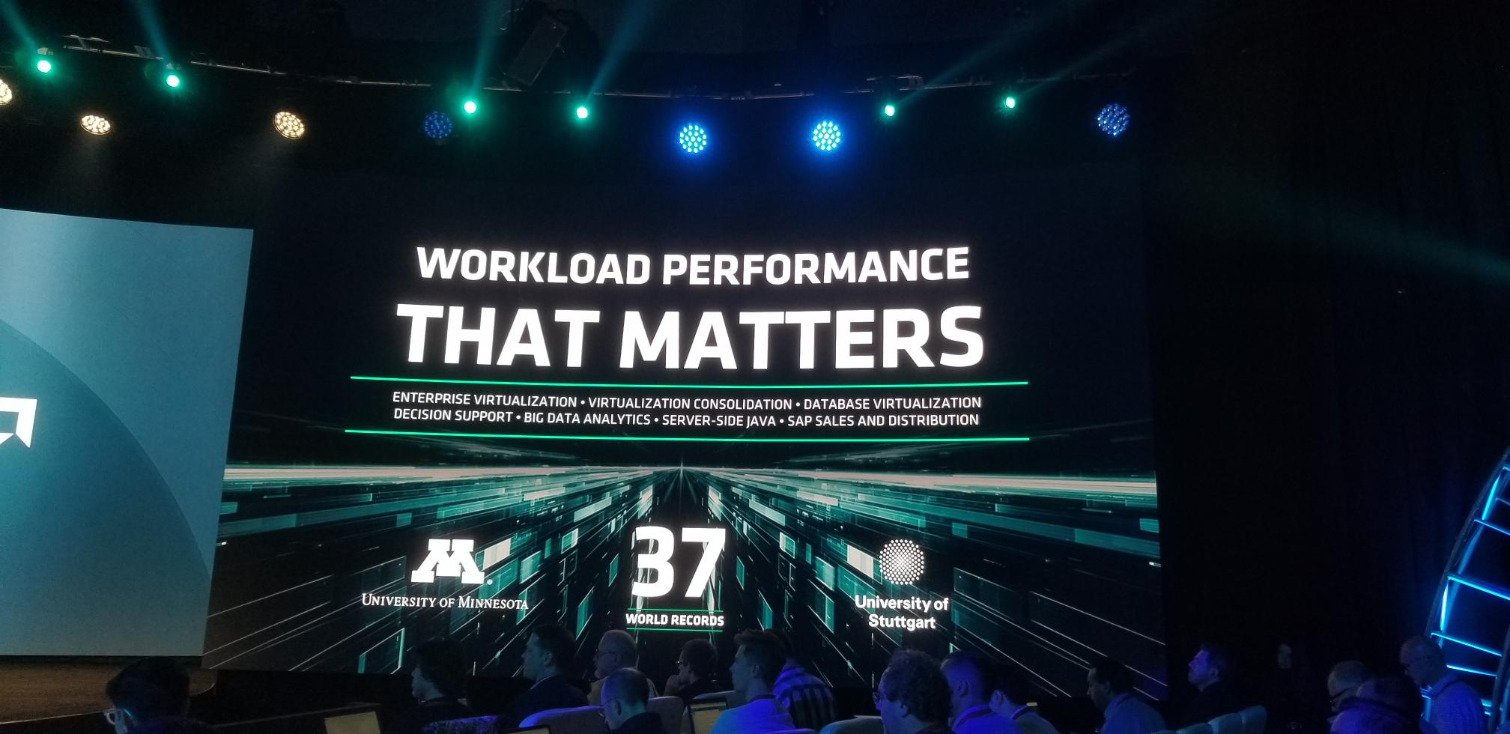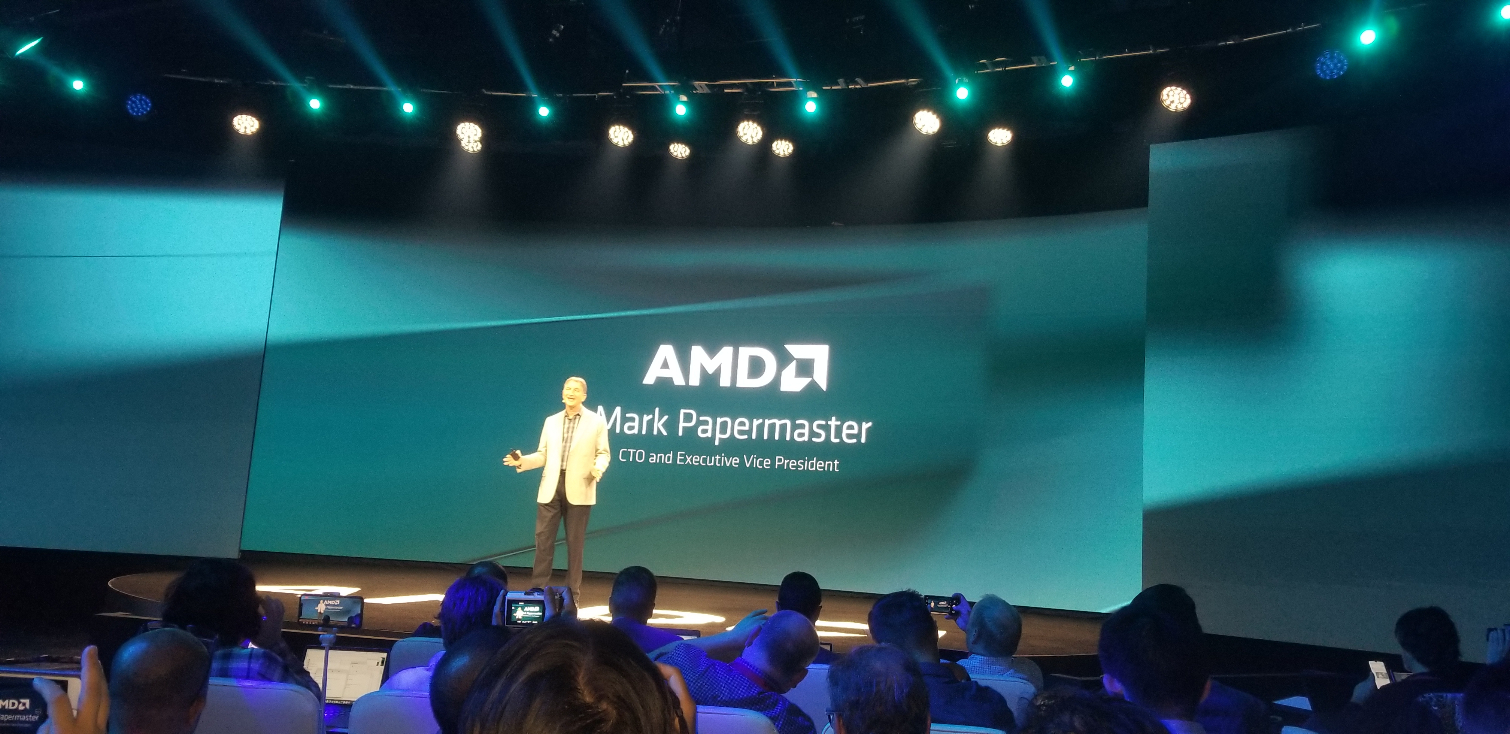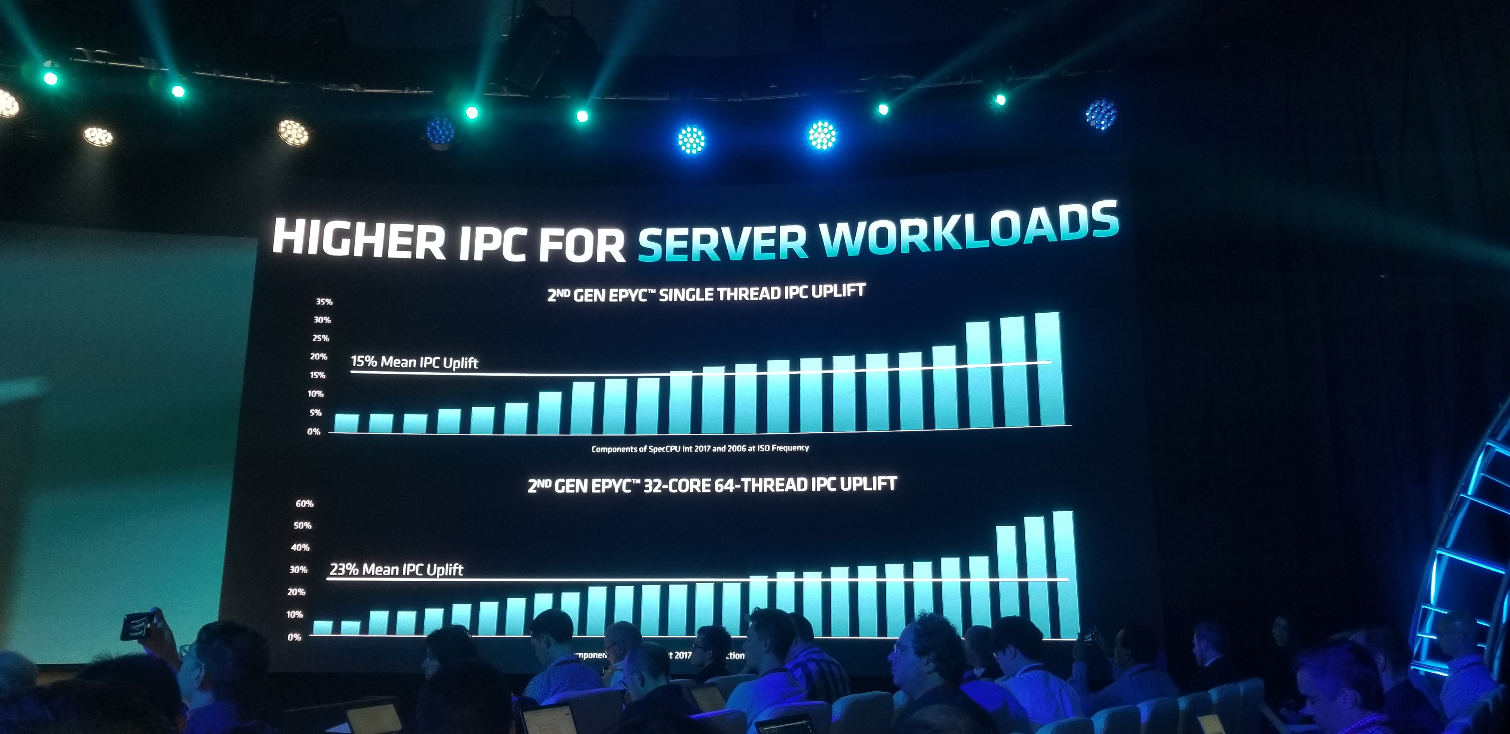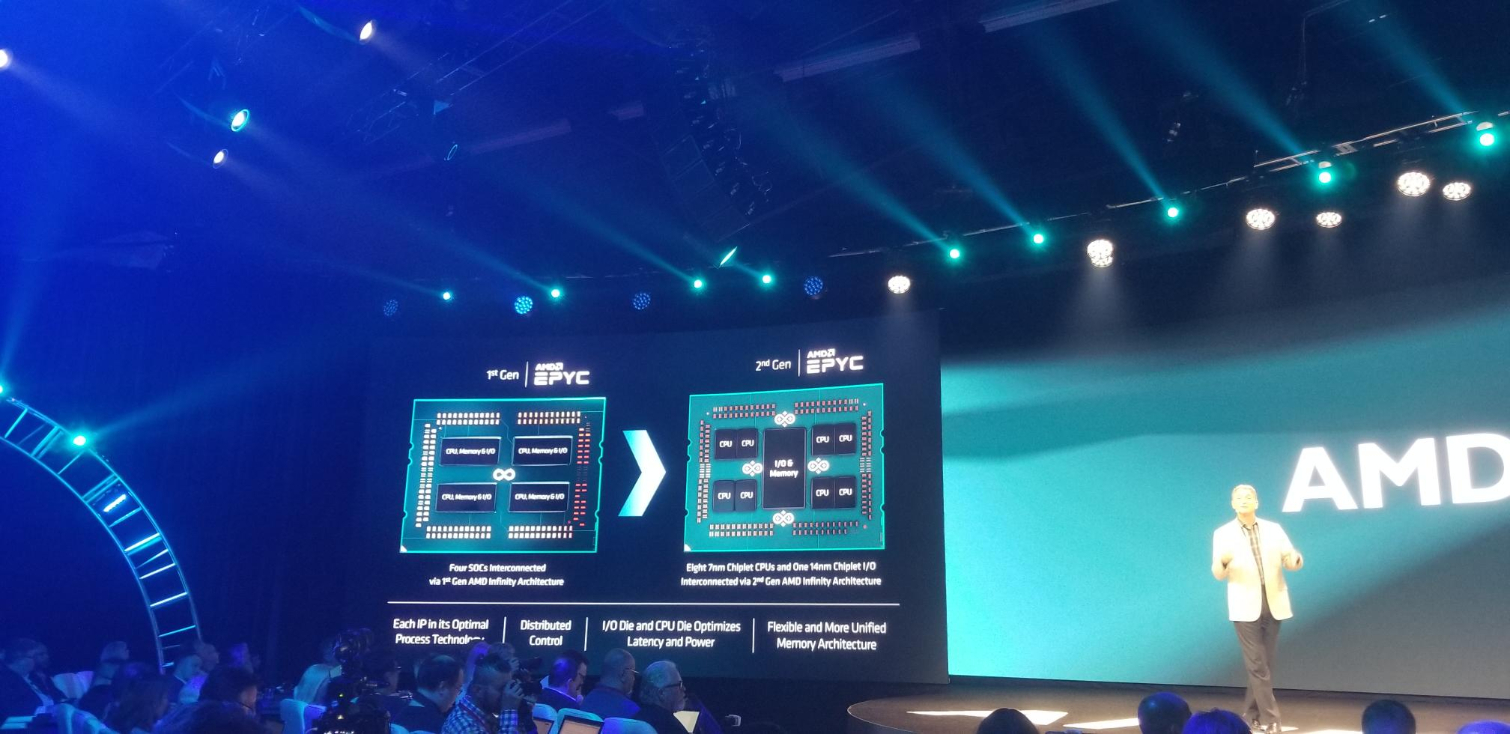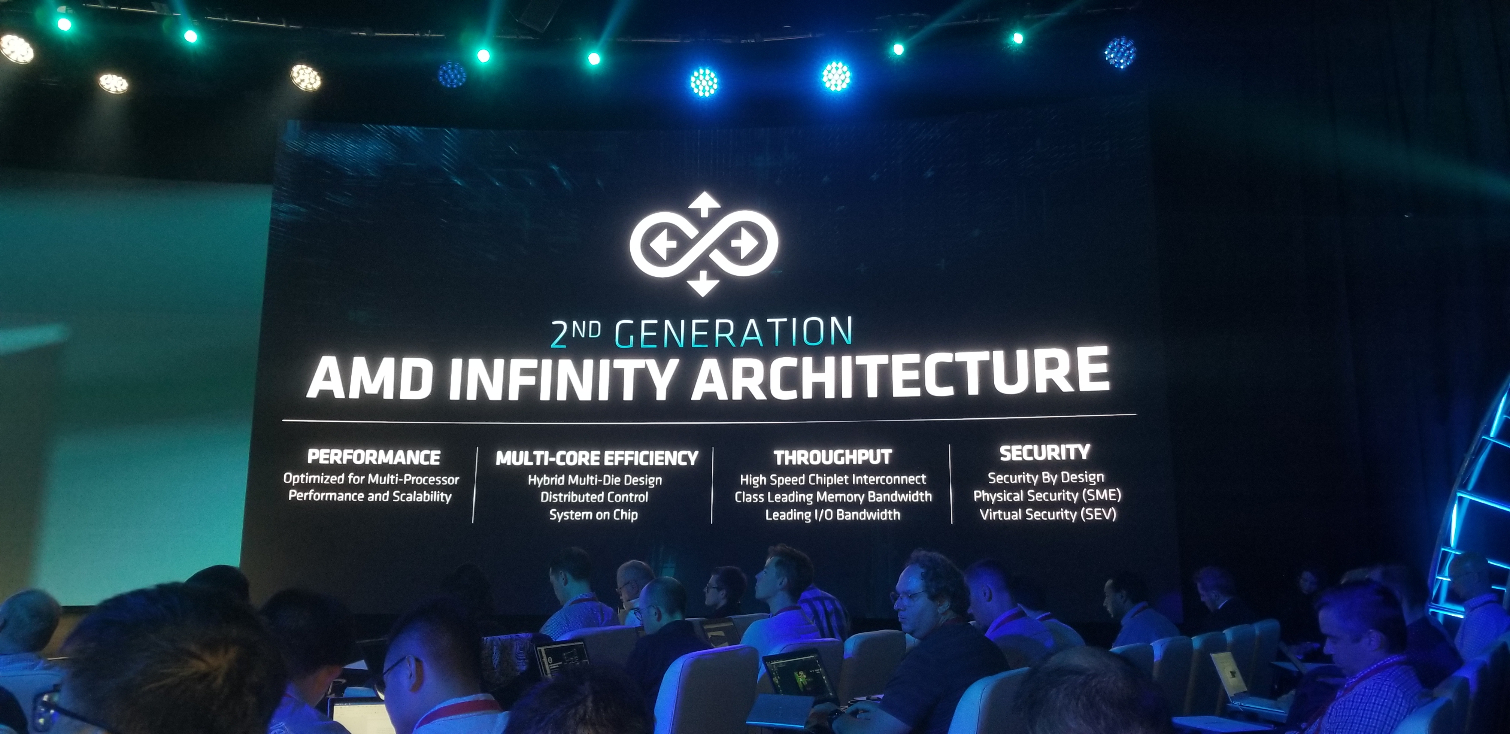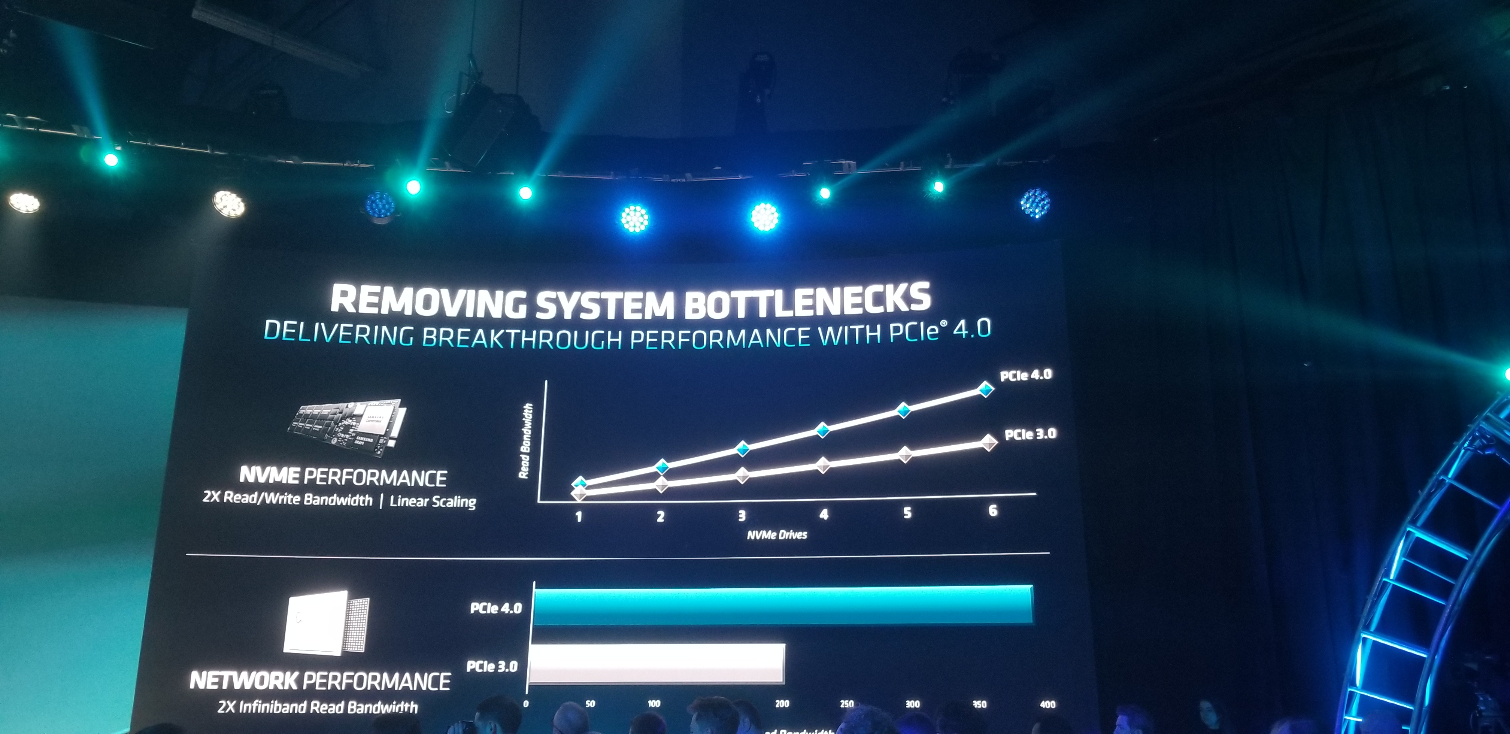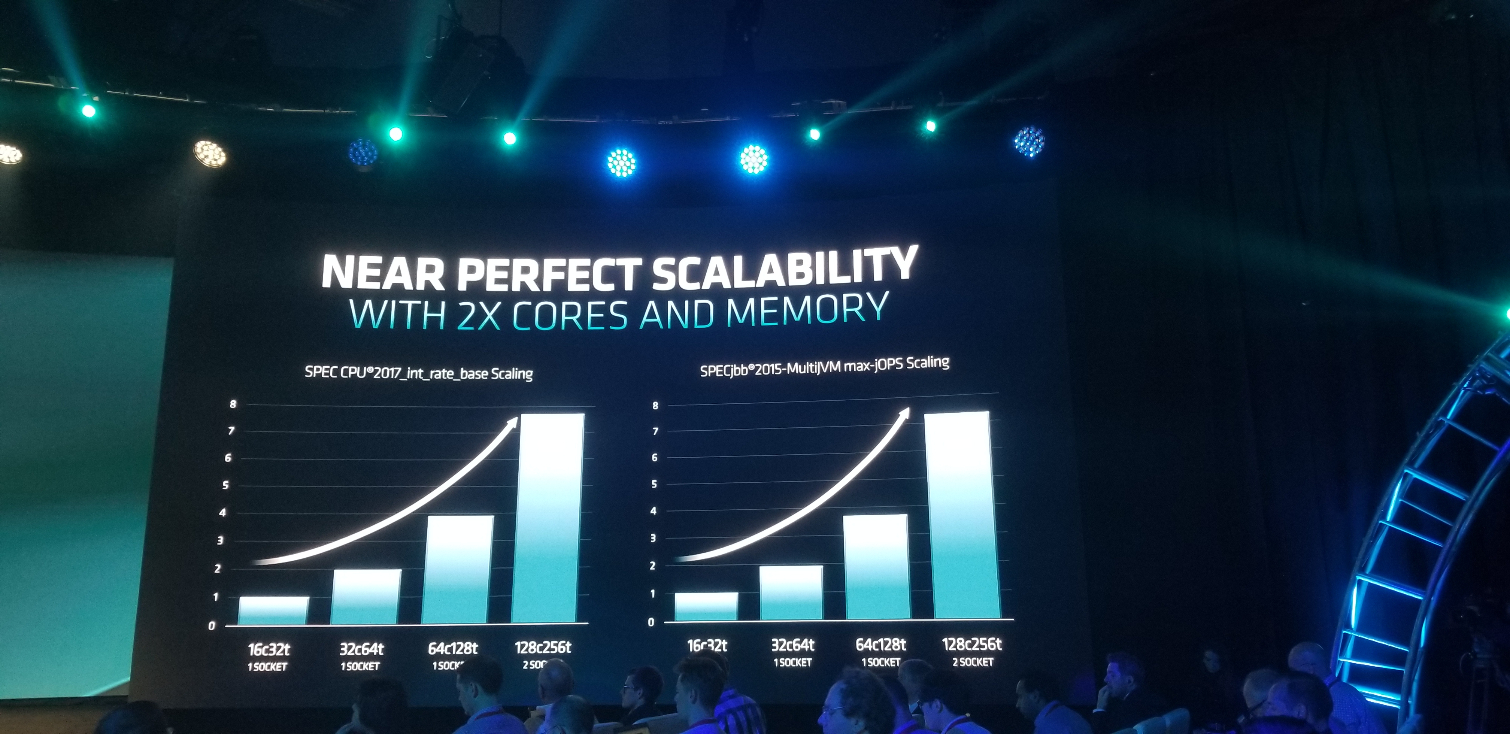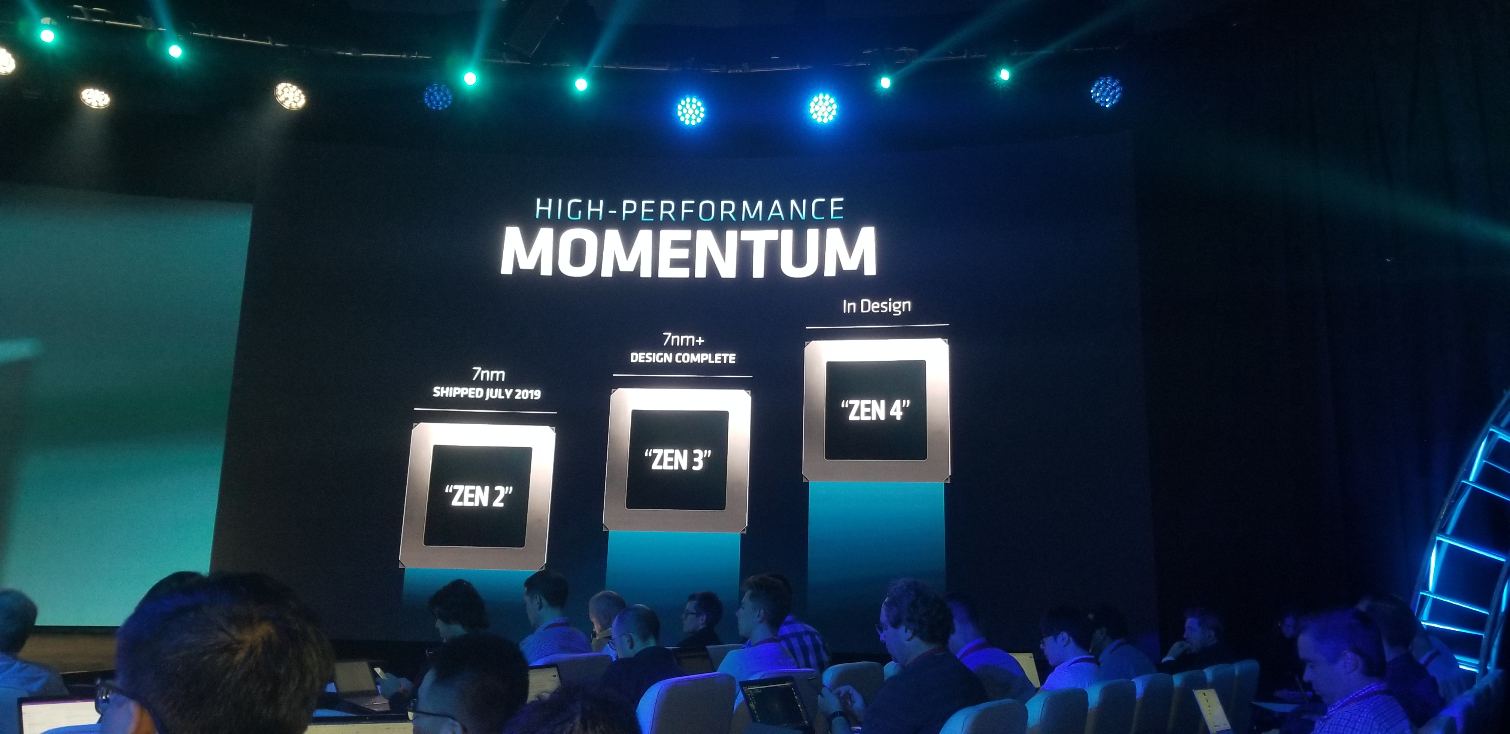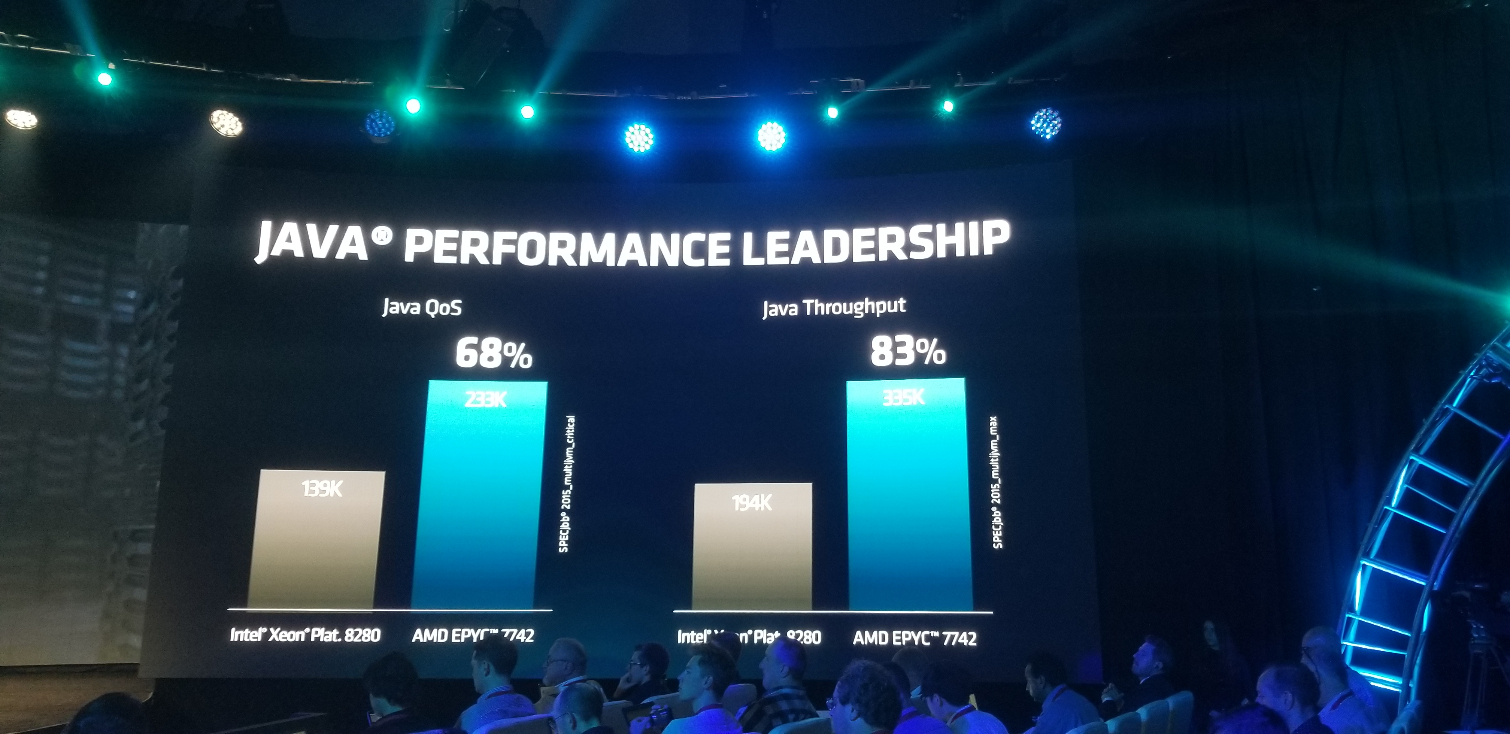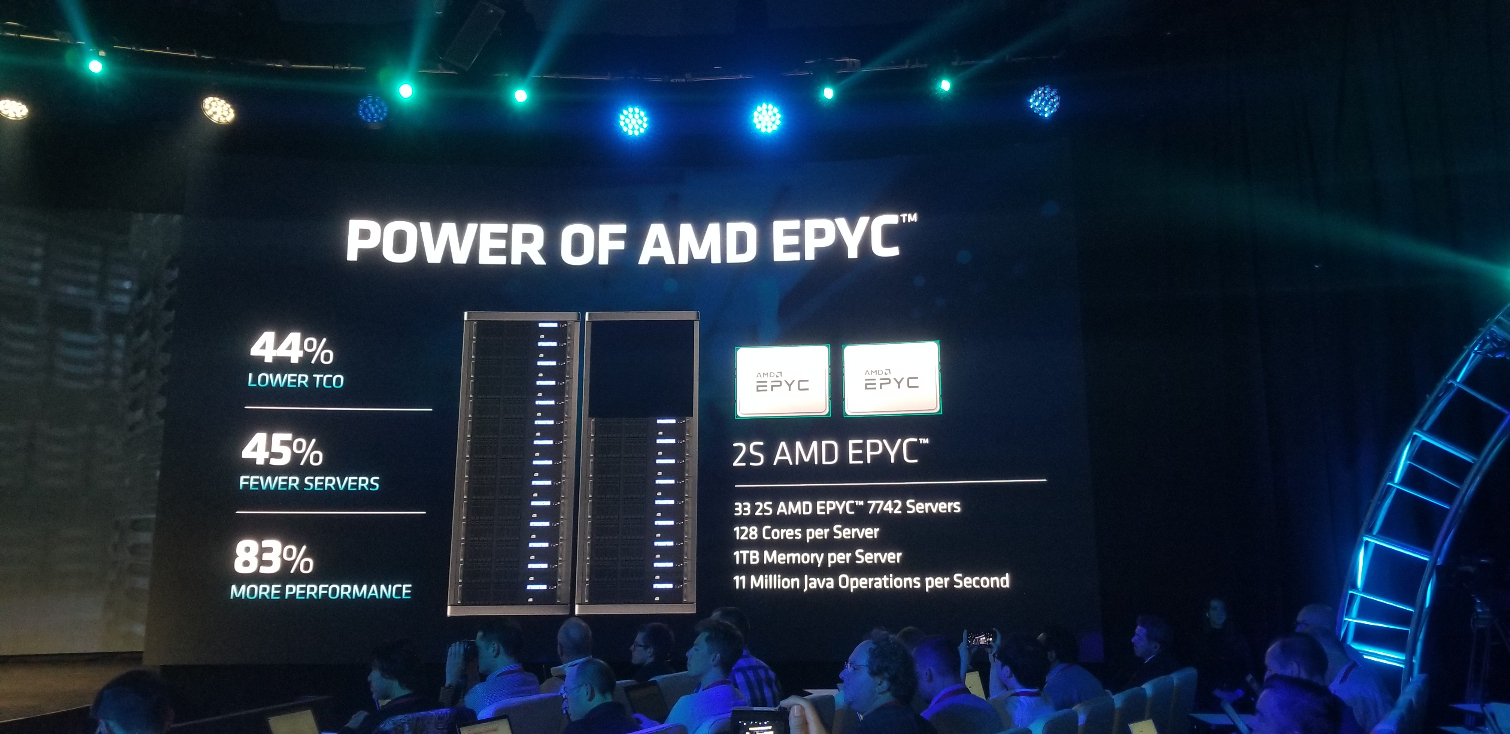AMD 7nm EPYC Rome Launch Event Live Coverage
The NDA has expired, our full coverage, including SKUs and pricing, is here.
AMD's CEO Dr. Lisa Su is set to take to the stage here in San Francisco to unveil the company's new 7nm EPYC Rome processors. We'll cover the event here live, but keep your eyes peeled for the full breakdown in a few hours. For now, refresh your browser frequently for updates.
Su discussed the problems facing data center administrators, such as the need to process ever-increasing amounts of data and to deal with the increasing number of security threats.
AMD's Naples chips debuted in 2017, with the goal of providing more cores, more memory bandwidth, and more I/O at every price point. Delivering on those goals required a robust ecosystem of hardware partners. Su said AMD has over 60 platforms in the market, with the number increasing daily.
AMD has also invested heavily in fostering cloud-based instances, which now number at 50 around the world. AWS introduced its first EC2 instances in November of last year.
Su played up the company's line of 7nm products, which includes Zen 2 processors and the Radeon RDNA architecture. Pairing the 7nm process with the chiplet-based Zen 2 architecture allows the company to increase density and lowers cost.
Su said the 2nd-gen EPYC processor is the highest-performance x86 processor in the world. The company will present 80 world records here for the audience.
Get Tom's Hardware's best news and in-depth reviews, straight to your inbox.
Su said that EPYC is the new standard for the modern data center. It has the highest core count ever of 64 cores and 128 threads, the most I/O with 128 lanes of PCIe 4.0, and higher boost frequencies than the previous-gen models.
Su pointed out that the data center has had incremental improvements over the last decade, but AMD looks to change that paradigm.
Su said the company has almost double the performance of Intel's Cascade Lake processors.
AMD claims to have 97% higher performance than Intel's 8280, it's $10,000 flagship, at a lower cost.
Su said EPYC provides from 2x more performance per dollar than Xeon, and up to 4x.
That equates to lower operational and capital expenditures.
Su said it takes a robust ecosystem to bring these platforms to market, and its partners are here to tell us about their new systems.
Su invited an HPE representative to the stage to talk about the company's new Rome systems. HPE has three systems available today, the DL25, the DL35, and the Apollo 35. HPE will have 12 Rome systems in its portfolio by this time next year.
HPE set 37 world records with its EPYC Rome servers. The company also discussed its new security initiatives and how AMD's EPYC Rome has an in-built security co-processor that helps secure servers and data at rest.
Jen Frasier, Senior Engineer at Twitter, came to the stage to talk about how the company uses AMD's EPYC processors. Twitter processes hundreds of millions of tweets per day, which requires scaling up to more powerful processors.
Frasier said the Rome processors have reduced the amount of power the company consumes per core, which reduces cost. Rome's increased density allows Twitter to pack in 40% more cores per rack, and 25% lower TCO. Twitter will roll out Rome in its data centers in 2019.
Su and Frasier took a selfie with the audience before Frasier left the stage.
Mark Papermaster came to the stage to talk about the move to the 7nm process node. AMD needed to work closely with fab, design, and EDA partners to bring the designs to market. Rome provides double the number of cores in a similar TDP envelope as its previous-gen EPYC Naples processors.
Papermaster said that spreading Zen 2's 15% IPC improvement across 32 cores increases it to 23%. That's an odd measurement. Papermaster also outlined the improvements to the Zen 2 microarchitecture, but all of these advances are known. We'll cover these details in our full breakdown that will post shortly at NDA lift.
AMD moved to a second generation of the Infinity Fabric, just like we see with the Ryzen 3000-series processors. This link is also used for socket-to-socket communication in servers. Papermaster displayed the new chip layout, with a 12nm I/O die serving as the lynchpin for eight 7nm eight-core compute dies.
Papermaster talked about the benefit of faster I/O throughput borne of the new PCIe 4.0 interface.
Papermaster claims that EPYC Rome performance scales well based on core counts and memory throughput, even out to two-socket configurations, which indicates the cores aren't memory-bandwidth-starved.
A Dell representative came to stage and talked about the company's first-gen EPYC Naples products, and now is moving forward to Rome processors. The parade of partners continues. VMWare's Krish Prasad came to stage to talk about how the company is working with AMD.
AMD has completed the design phase of Zen 3, and already has Zen 4 in the design phase.
Forest Norrod came out to talk about Rome improvements. The biggest Rome processors come with up to 32 billion transistors spread across 1000mm2 of silicon.
Norrod also pointed out that Rome works wonderfully with Java code, and showed some benchmarks to back it up.
Cray came to stage and announced that it has sold over a billion dollars of Cray supercomputers powered by EPYC processors. One of those big sales includes the money make to power the Frontier supercomputer. Cray announced a new Cray supercomputer for the US Air Force for weather forecasting. Cray also announced that Indiana University will deploy a new "Big Red 200" Cray supercomputer powered by EPYC.
Norrod said that a single-socket Rome server can outperform almost Intel's entire product stack -- but when they are in dual-socket servers. That's quite the claim.
Finally, Su returned to stage and invited Google's Bart Sano, the Vice President of engineering, out to stage. He announced that Google already has Rome silicon working in its data centers in a production environment. Google plans to widen the deployment over time.
Google will make Rome processors available via VMs on Google Cloud.
Su wrapped up the event and closed the show by thanking her employees, the industry partners and customers, but she left us with one point.
AMD has completed Zen 3 that is going into Milan, and the company is already working on Zen 4 to power Genoa.
The NDA has expired, our full coverage, including SKUs and pricing, is here.

Paul Alcorn is the Editor-in-Chief for Tom's Hardware US. He also writes news and reviews on CPUs, storage, and enterprise hardware.
